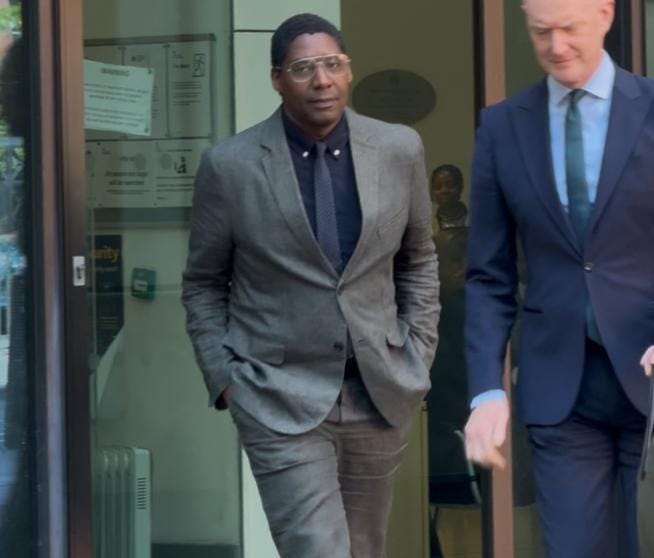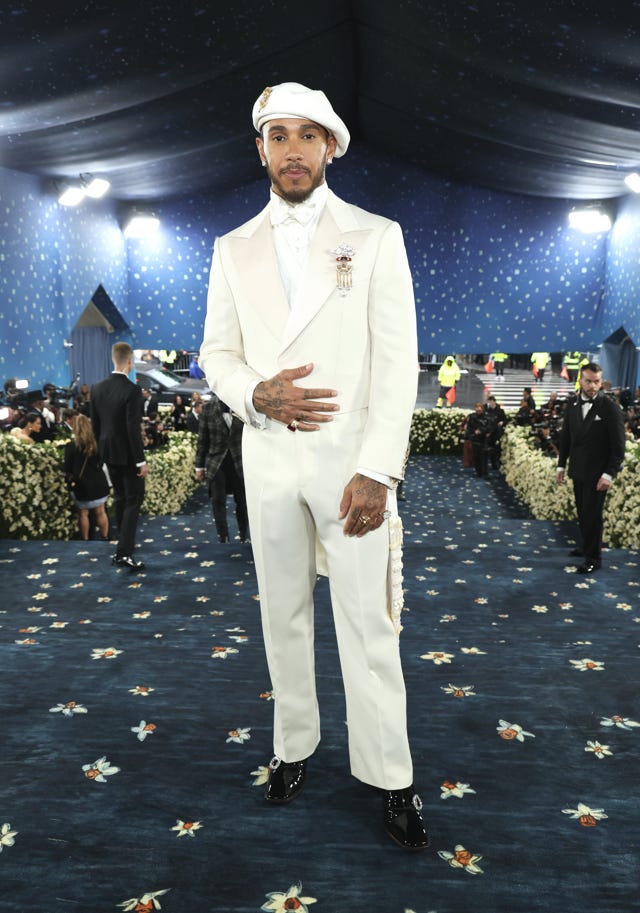A tailoring expert's look at the Met Gala
Menswear expert Chris Modoo guides us through the hits and misses of the Met Gala, and a preview of big changes to money laundering rules which will affect luxury businesses
We have an interesting pair of stories for you today.
We spoke to one of the most experienced menswear experts we know to assess the technical and historical side of this year’s Met Gala, something we feel has been neglected among the otherwise excellent and wide-ranging commentary on the event. Scroll down to read that story.
But first, a preview of major changes that are coming to anti-money laundering regulations in the UK, which will affect “high-value dealers” of luxury goods. Those changes come after the guilty plea today by art dealer and BBC freelancer Oghenochuko Ojiri, who admitted failing to report sales of art to a man suspected of financing the proscribed group Hezbollah. Prosecutors said in court that Ojiri failed to properly act on the advice of third party advisors on “compliance matters”, who told him of his obligations as a dealer of high-value art. He’ll be sentenced in June, and could face up to five years in prison.
Art dealer admits terror offence after selling to 'Hezbollah financier'
Conrad Quilty-Harper
I was at Westminster Magistrates’ court this morning to see art dealer, BBC art expert and vintage fashion shopkeeper Oghenochuko Ojiri plead guilty to offences related to the financing of a terrorist group, for art sales that took place between October 2020 and December 2021.
Ojiri, 53, admitted to eight offences of failing to disclose to authorities that he knew he was selling £140,000 worth of art to Nazem Ahmad, a man accused of financing Lebanese militant group Hezbollah, in the first prosecution of its kind.
Hezbollah is proscribed as a terrorist organisation by countries including the UK and the US, and Ahmad was sanctioned by the US at the time of the sales: the US Treasury accused Ahmad of laundering money and smuggling “blood diamonds” for the group in 2019.
Ojiri founded Ramp Gallery, now known as the Ojiri Gallery, in east London in November 2021, and hired a third party to advise him about the rules and his obligations around tackling money laundering and the financing of terrorism when dealing with Ahmad.
That advice was “not properly acted on”, said prosecutor Lyndon Harris. Ojiri had accessed news reports about Ahmad’s designation and discussed this with others, according to Court News UK, and knew who Ahmad was. Yet he admitted failing to report the transactions to the authorities, as the law required him to do. Ojiri said he was sorry, and that he did not support terrorist activity.
Incoming changes to anti-money laundering rules
His case is a timely one for anyone dealing with high-value luxury goods and services because as of Wednesday next week, anti-money laundering guidance in the UK is being widened to potentially include many more traders and dealers of “high-value” products.
Staff at major fashion retailers including Kering in Paris are already using apps to keep track of and identify suspect clients as part of the group’s anti-money laundering and terrorism financing policies.
In the UK, the changes may mean that many more companies, including much smaller firms, will have to do the same.
We’ll have a deep-dive on Wednesday into the implications for those selling and buying luxury goods.
2025 Met Gala tailoring hits and misses
Alfred Tong
In the flood of commentary about the social and cultural symbolism of this year’s Met Gala, there was very little technical and historical analysis of the tailoring. The theme, “Superfine: Tailoring Black Style”, surely demanded it. Menswear commentary on the internet is something of a Wild West, with the loudest and most ludicrously ignorant hot takes usually getting the most noise. Put simply, there are a lot of loudmouths and very few experts.
Tailoring, let's not forget, is a highly specialised area of expertise and few are able to combine the technical, historical and aesthetic knowledge with first-hand practical experience of red carpet dressing. That’s why we spoke to Chris Modoo, who has worked on Savile Row for the past 30 years as a buyer, designer and personal dresser, including for many red carpet events in London, and who is the expert we chose to guide us through this year’s hits and misses.
“The Met Gala is where red carpet dressing becomes a kind of blood sport, really”, said Modoo, who was introduced to me some 15 years ago when he was a buyer for Savile Row outfitters Ede & Ravenscroft by the stylist William Gilchrist. “It’s such a high pressure event”, said Modoo of the challenge of dressing for the Met Gala. “There really is nothing like it”, he said.
Edward Enninful in Casely-Hayford
“What I love about this is that it’s not a re-enactment, it doesn’t feel like a costume. You can see the references, such as the M-shaped lapel, which is a really archaic Regency detail”, said Modoo of Enninful’s outfit designed by Casely Hayford, the London tailoring house founded by the late British designer Joe Casely Hayford OBE, and continued by his son Charlie.
“Outside of some livery tailoring, I really haven’t seen that kind of detail in civilian clothes in a very long time. The coat is an early style of tailcoat. I love the high contrast colour combination of black, cream and white, which speaks to the dandy mode of expression which is to use a very minimal colour palette”.
Modoo was particularly taken by some of the finer, less noticeable details which draw the eye in. “I love the shape of the waistcoat and the intricate jacquard embroidery, the horizontal pleating on the shirt, and the fact that he’s showing some cuff”, he said. “There’s so much going on in this outfit but it’s all been so beautifully and subtly put together. I love this. This is about modern dressing with very elegant, subtle hints to the historical references”.
So that’s a hit and one of our expert’s favourite looks of the night.
Andrew Scott in Giuliva Heritage
“What's the story here?” asks Modoo of the outfit worn by the actor Andrew Scott, which was designed by Giuliva Heritage, the Italian brand founded by the husband-and-wife duo, Margherita Cardelli and Gerardo Cavaliere. “I think he looks ridiculous, like he's going to Comic Con. I'm trying to see the references here – maybe there are some clever references that I’ve missed?”
Sadly, the colour combo also does not work for Modoo. “I’m not against colour on the red carpet but this looks more fussy than Edward’s look. Andrew’s got great style. He's a clothes horse, he’s got a great figure. He’s slim, he’s confident in his clothes but this outfit doesn't say ‘Dandy’ to me”, he said.
As ever, with tailoring it's all about nailing the details. “It’s really important to get the collar right”, said Modoo. “The undone collar is really throwing me here. It probably would have been OK if there was a sharper tie knot and a sharper collar. That slovenly, tie undone early 1980s look can look amazing but in this context, I don’t get it”.
So that’s a hard miss. Ouch.
Lewis Hamilton in Grace Wales Bonner
“He's not afraid to try something different and even the beret, that's kind of cool”, said Modoo of this outfit by acclaimed independent British designer Grace Wales Bonner, who often collaborates with Savile Row’s Anderson & Sheppard on tailored looks such as this.







